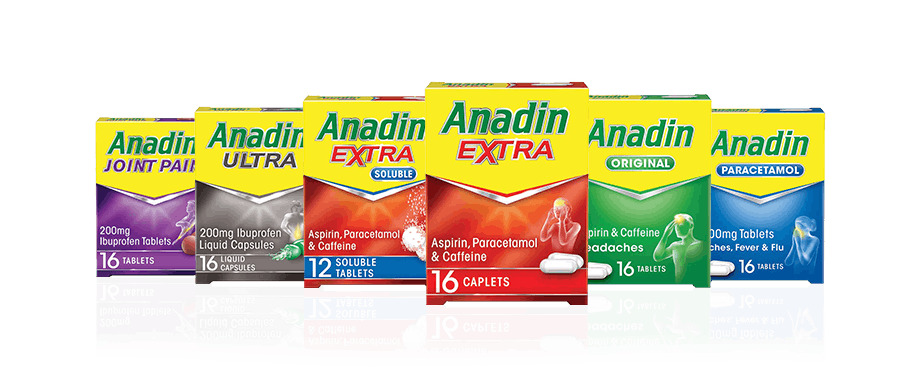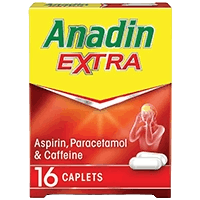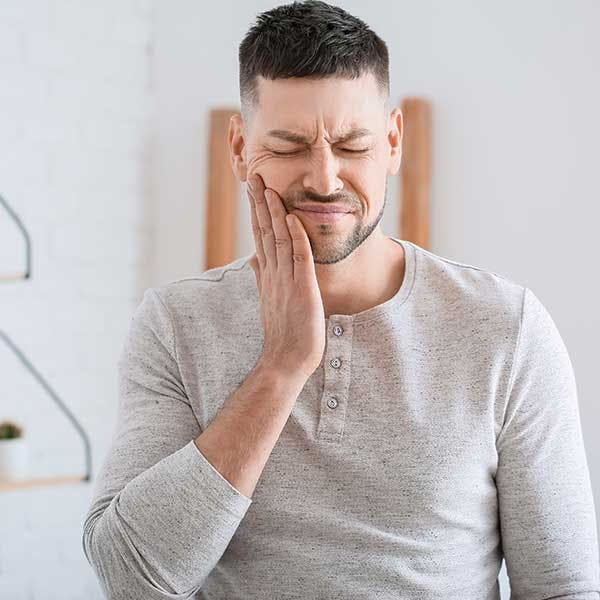Aspirin + Caffeine
Aspirin + Paracetamol + Caffeine
Anadin Extra Tablets Anadin Extra Soluble Tablets
Paracetamol
Your shoulder is a very flexible joint and can make many everyday tasks difficult when you experience shoulder pain. To treat shoulder pain effectively, you need to understand what’s causing the issue. Find out more below about symptoms, causes and the treatment available for shoulder pain.
What are the symptoms of shoulder pain?
There are a number of symptoms you may notice, the most common of which include:
- Pain that’s often worse while using your arm or shoulder
- Tingling, numb, weak arm, feels like the shoulder is clicking or locking
- Pain and stiffness that does not go away over months or years
- Sudden very bad pain, difficult to move your arm
- Pain on top of the shoulder (where the collarbone and shoulder joint meet)
What causes shoulder pain?
There are a number of shoulder pain causes, some of which include:
- Injury – There are a number of injuries that can cause shoulder pain, this can include accidents, falls or sports injuries
- Certain medical conditions – There are a number of conditions which cause issues with the shoulder joints. These include arthritis, hypermobility and more.
- Dislocation – When the joint comes out of place, this is called a dislocation, it can be very painful and if you believe your shoulder is dislocated seek medical attention from a healthcare professional straight away.
- Shoulder joint inflammation – Sometimes, the joint can become inflamed and irritable
What are the different types of shoulder pain?
There are different types of shoulder pain, which can occur for a number of different reasons. Some of the most common types are listed below.
- Tendonitis – When tendons swell due to inflammation after a tendon injury, it is called tendonitis. This can cause joint pain, stiffness and movement.
- Osteoarthritis – Sometimes, the protective cartilage on the ends of your bones breaks down, causing pain, swelling and problems moving the joint; this is called osteoarthritis and causes painful and stiff joints.
- Frozen shoulder – When you have a frozen shoulder, you may experience a painful and stiff joint for months or sometimes, years.
- Bursitis – When you have Bursitis, a joint called the bursa that cushions your joints becomes, inflamed causing pain, tenderness of skin and at times swollen joints.
What treatment is available for shoulder pain?
When seeking relief for shoulder pain, there are different types of treatment available:
Over-the-counter painkillers – Depending on your pain and its cause, there are a number of shoulder pain relief medications available. Options such as Anadin Joint Pain Tablets set out to relieve aches and inflammation by targeting the joints that are causing pain, providing up to 8 hours of relief.* Similarly, Anadin Ultra works rapidly to ease symptoms of pain and inflammation for up to 8 hours of relief*.
*Based on a 400mg dose.
- Antibiotics when the pain is caused by infection – Some conditions, such as Bursitis, can be caused by an infection. When there is an infection, a healthcare professional will prescribe antibiotics as a recommended course of action.
- Steroid injections can be given to reduce swelling – To reduce inflammation, steroid injections can reduce inflammation throughout the body.
- Physiotherapy – Physiotherapists work to get bodies moving after injury or illness. They work with you to identify how best to get you moving again through different exercises1 . If you are in extreme pain, or your shoulder pain hasn’t eased after two weeks, seek medical attention from a healthcare professional.
Frequently Asked Questions
Does heat help shoulder pain?
Yes, heat can help to relieve shoulder pain. It’s recommended to use a hot water bottle wrapped in a tea towel for up to 20 minutes 2-3 times a day. You can also use ice for shoulder pain, using frozen peas in a tea towel for 20 minutes three times a day.
How to sleep with shoulder pain?
Trying to sleep with shoulder pain can be difficult, but it is possible. Simply sleeping on your back can still put some strain on the joint; however, if you rest your arm on a folded blanket to keep it aligned, it can help ease the pain. Avoid sleeping on the affected shoulder, and if you are concerned about rolling onto the painful shoulder, utilise a pillow in a way that will prevent this from happening.
















